Falling
off the tractor and being runover, either by the tractor or
the implement being pulled, is a common cause of fatal and
serious agricultural injuries. Falls and runovers account
for about a third of fatal and serious injuries involving
tractors.
| Being thrown off the operator seat when the tractor hits a hole, stump, or ditch. | 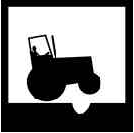
|
| Extra riders. Allowing extra riders on tractors is asking for trouble since sudden stops and starts or hitting holes, bumps, low branches, or other obstacles can cause the extra rider to fall off and be runover. Small children have even been known to fall from tractors with cabs when they accidentally bump against the door handle, thus opening the door. | 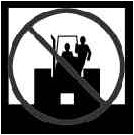
|
| "Jump" starting the tractor when standing beside it. If the tractor is in gear when started it will lunge forward or backward and could run over nearby workers before they can get out of the way. | |
| Trying to mount or dismount when the tractor is moving, especially when the deck or railing is wet. | |
| Slipping on the steps or platform when mounting or dismounting. Steps or shoes with grease or mud on them or that are wet can cause operators to slip and fall. | |
| Leaving the deck of the machine cluttered with tools and other items. Loose tools can cause trips. They can also become flying objects and strike workers nearby. | |
| Riding on the tongue or any part of the implement being towed. A bump or sudden jerk can cause the rider to lose balance and fall off. | 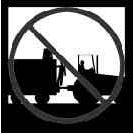
|
| The operator not aware of where others are when the machine is started and put in motion. | |
| Leaving the parking brake off when parking the tractor especially on a slope. The tractor can slip out of gear and roll forward or backward. | |
| Poor maintenance of brakes and clutches. | |
| An operator's foot slipping off the clutch when hitching implements or working on the machine. | |
| Poorly trained and physically unfit operators. They may not be able to effectively operate the controls to avoid an accident. | |
| Preventing Falls and Runovers | |
| Most new tractors have safety start systems that do not allow the tractor to start in gear without de-pressing the clutch. Never bypass these systems. When jump starting a tractor, always connect cables to the battery and not the starter. Jumping through the starter bypasses the safety start system, resulting in the operator being run over if the tractor is in gear. | |
| Do not allow extra riders. The ONLY time extra riders should be allowed is for training purposes. Tractors are designed to carry only one person the operator. | |
| Slow down on rough ground or where hidden obstacles might be encountered. | |
| When going into a strange field or one that you have not been in for a while, stop and shut off the tractor and walk over potential problem areas. Note hazards and debris. Mark these in areas of poor visibility, such as obstacles hidden in tall grass or brush. If you are able, remove debris before starting any tractor operations. Operators must be familiar with the area they are working! | 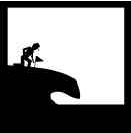
|
| Never try to mount or dismount a tractor or ma-chine when it is moving. Keep decks uncluttered. Keep platforms clean and dry. Wear shoes that are in good condition with a slip-resistant sole. | |
| Always shut off the engine and apply the parking brake before dismounting the tractor. This will prevent the tractor from moving or rolling while parked. | |
| Operators should take frequent rest breaks to maintain alertness. | 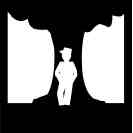
|
| Always start the tractor from the operator's seat. When people are around, always make sure bystanders are clear of the machine before starting. | |
| Train all operators thoroughly. The operators must be alert at all times and be aware of bystanders and potential hazards. They must be trained not only how to safely operate the machine, but also be familiar with the machine's mechanical capabilities and maintenance. | |
| Maintain the equipment in top operating condition. | |
| Install ROPS (Roll Over Protective Structure), and wear seat belts! Seat belts prevent operators from being thrown from the seat and under the tractor should an over-turn occur. However, if your tractor does not have ROPS, do not wear a seat belt! | 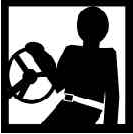
|
| Never ride on the implements, especially on the tongue. | 
|
Written
by Tom Karsky, University of Idaho, and A. K. Jaussi, former
graduate assistant, Washington State University. For more
information about farm safety, please contact:
| Published December 1998 | Harvesting Hay and Forages | Farm Safety Series PNW 512 |
Disclaimer and Reproduction Information: Information in NASD does not represent NIOSH policy. Information included in NASD appears by permission of the author and/or copyright holder. More